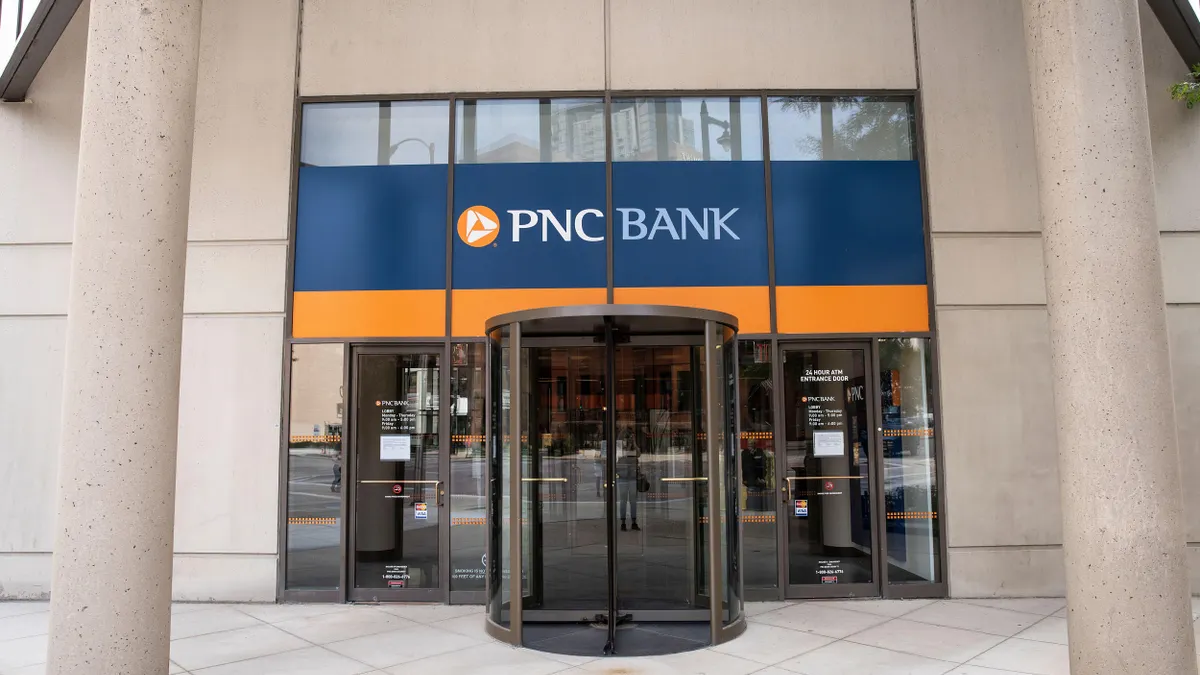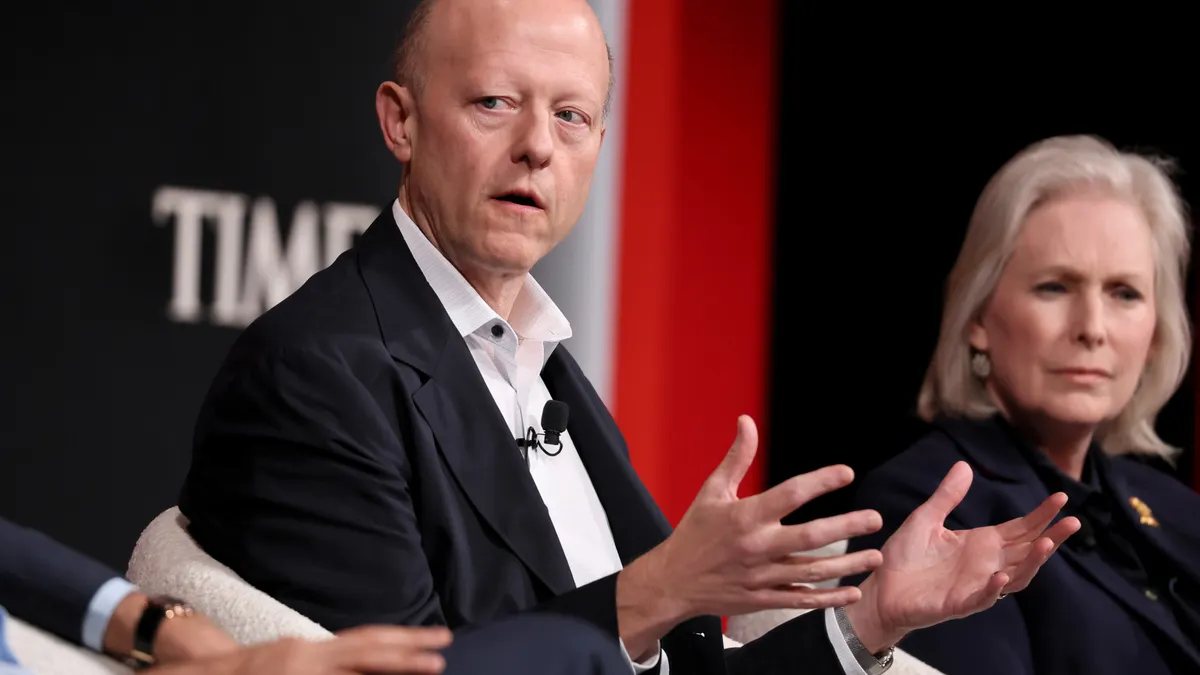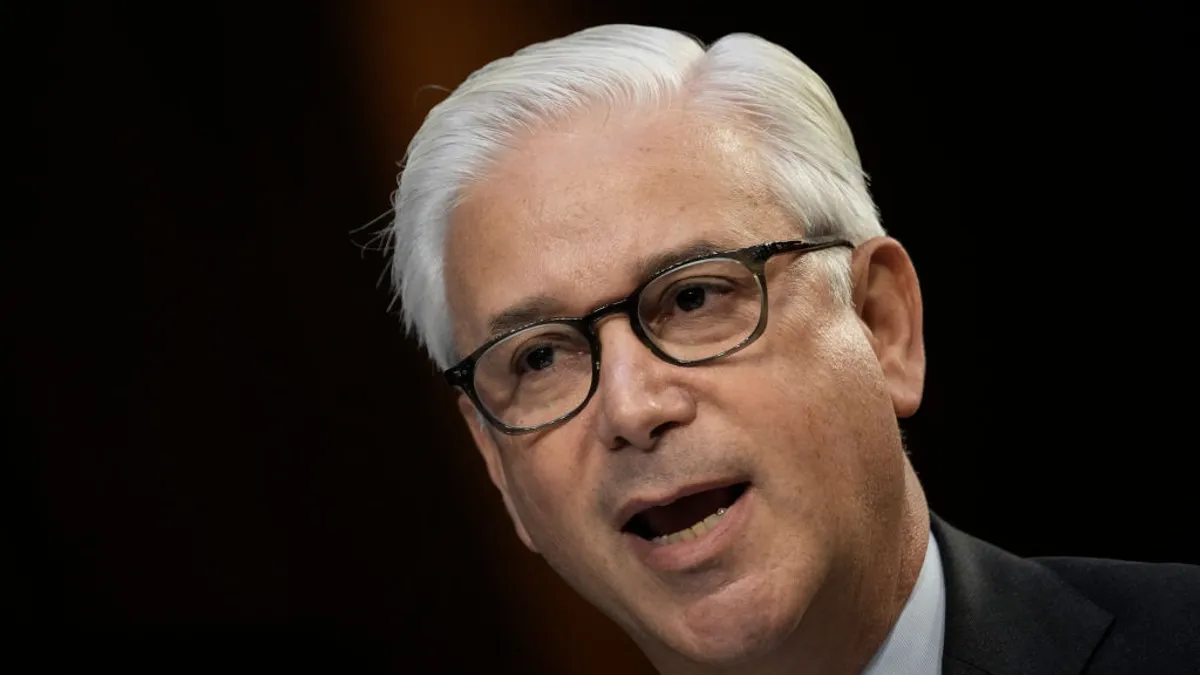Michael Ruttledge has no doubt Citizens Bank is merely scratching the surface when it comes to the use of generative artificial intelligence.
But the $219.9 billion-asset bank’s pacing in its use of the burgeoning technology is key, keeping security and customer privacy top of mind, said Ruttledge, chief information officer and head of technology services at Providence, Rhode Island-based Citizens, during an interview this month.
“We're not rushing into this,” Ruttledge said. “But I know by the pent-up demand … by the number of use cases that people want to go forward with, that the ideas are there, the demand is there.”
Citizens recently completed a pilot that tapped genAI to help the bank’s software engineers develop code, said Ruttledge, who was a unit CIO at American Express before joining Citizens. Now, the bank looks to roll out the capability to about 1,000 software engineers this year and ramp up through next year.
Editor’s note: This interview has been edited for clarity and brevity.
BANKING DIVE: Citizens CEO Bruce Van Saun has cited strategy as a top challenge for banks when it comes to employing AI. Where is the bank at with genAI ideation versus implementation?
MICHAEL RUTTLEDGE: We’re putting a very deliberate, dominant structure around the use of genAI. We started with basically a hackathon: we generated over 90 different ideas across the bank, and we honed it down to half a dozen we were really going to pursue. Two are actually in production.
One is the use of Microsoft Copilot, which our engineers can use to help develop code. We’ve just wrapped up a pilot with a group of engineers, which we saw a 20% productivity boost from. We’re going to be rolling out Copilot to about 1,000 of our engineers. People are using it to do core code conversions, taking SAS code and converting it to Python. They’re using it to do documentation, they’re using it to understand legacy code that maybe is not well documented. They’re using it to generate test use cases. It’s an extension of what we’ve been doing, because we’ve really been looking to enhance the productivity of engineers.

The second is around our contact center, and we developed a genAI model that replaces a legacy app that our contact center representatives can use when a customer calls in and asks a product question. It will come back with an answer about what the best product is to offer that customer, or that product’s features. It’s a colleague satisfier and a customer satisfier. Call resolution time has gone down. These two use cases are leveraging the same platform, rather than having everybody develop their own solutions.
We have taken a deliberate approach, probably over the last six, nine months, because we had to put the appropriate guardrails in place, the appropriate security and governance. So throughout these use cases, we have the human in the loop, so there's someone validating the code as written before it's launched in production. There's someone validating and checking the answers before we give it to our customers. We haven't done anything yet direct to consumer.
When do you expect that might happen for Citizens?
Eventually, that will definitely happen. You can take a risk lens on it, and there’s probably certain use cases that are more likely than others. Ultimately, chatbot technology, you’ll be doing it direct to consumers.
My personal opinion on that? Probably in a year or so, for us. Not for this year.
What else has been crucial as the bank evolved its approach to technology?
Our next-generation technology strategy really moved the bank to a more agile operating model, and brought in a lot of the tools and processes you need to do that, such as DevSecOps (development, security and operations), pipelines, test automation, building APIs, moving to the cloud and beefing up our engineering talent at the bank.
When you think about the cloud, previously it would take us months to provision infrastructure: we’d order a server, install the server; now that’s all automated. And we’ve built in controls along the way. It’s a huge time-saver. We’ve also done a massive amount of upskilling. We’ve reskilled about 600 of our engineers over the course of three, four years — reskilling them in the cloud, modern technology, more recently in data engineering and genAI — and we’ve hired upward of 750 software engineers.
Where is the bank at with its move to the cloud?
We will be completely out of all our data centers by the end of next year. We just crossed a major milestone in mid-July, in that we now have more than 50% of our applications in the cloud. We have a hybrid cloud strategy with Amazon Web Services and Microsoft Azure. By the end of this year, we’ll be at 70%, and by the end of next year, 100%.
During a congressional committee hearing earlier this month, Federal Reserve Chair Jerome Powell mentioned cyber and an attack on a major bank as a persistent worry. What are some of your biggest concerns?
Cyber and stability are always something we heavily focus on. We’ve got a really top-notch team to focus on that. With the world situation right now, nation-state threats are always there. It’s constantly top of mind, but we’re very well prepared. I have monthly briefings with my team on these events, we meet with the board on a regular basis, so we discuss it in detail. But the overall risk profile is high now, there’s no doubt about that. We’ve got to be conscious of all of these threats. We do a lot of training internally, to prevent phishing attacks, prevent vulnerabilities, getting into the code.
The proliferation of payment companies and fintechs, the speed in which they’re able to deliver, and the innovation, frankly, that we’re seeing in the marketplace — that’s something we’ve got to be ahead of. It’s the reason we’ve invested so much in our technology talents. We’ve hired from fintechs, cloud providers, as well as other banks. We’ve certainly tried to change our thinking in the bank, by adopting modern tools, moving to the cloud, and being able to attract equivalent talent. But some of these companies are unregulated and they’re able to operate at a speed that we can’t. So that’s something we’ve just got to be mindful of, how do we compete in that space?




















